There are only a few places in Europe where the wind carries the scent of oxidizing tea leaves, where rows of Camellia sinensis grow not behind glass but in open Atlantic air. On the north coast of São Miguel, in the Azores, there is one such place: Chá Gorreana.
This is not a curated tea experience in the stylized sense. Instead, what you find is something simpler and more resonant: an active tea plantation, free to wander, alive with rustling leaves, aging machinery, the gentle murmur of factory labor, and a green tea tasting station that feels more like a neighborly offering.
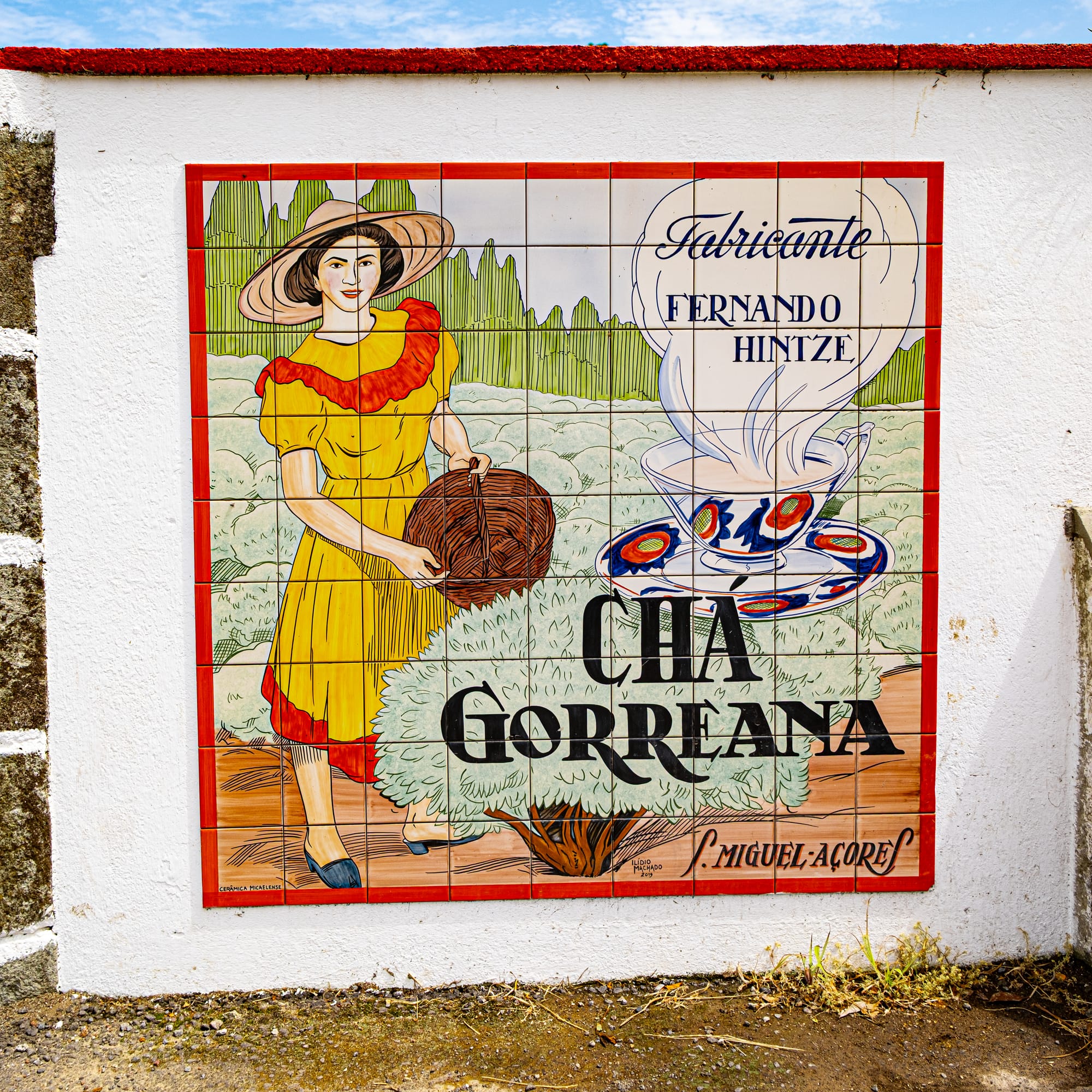
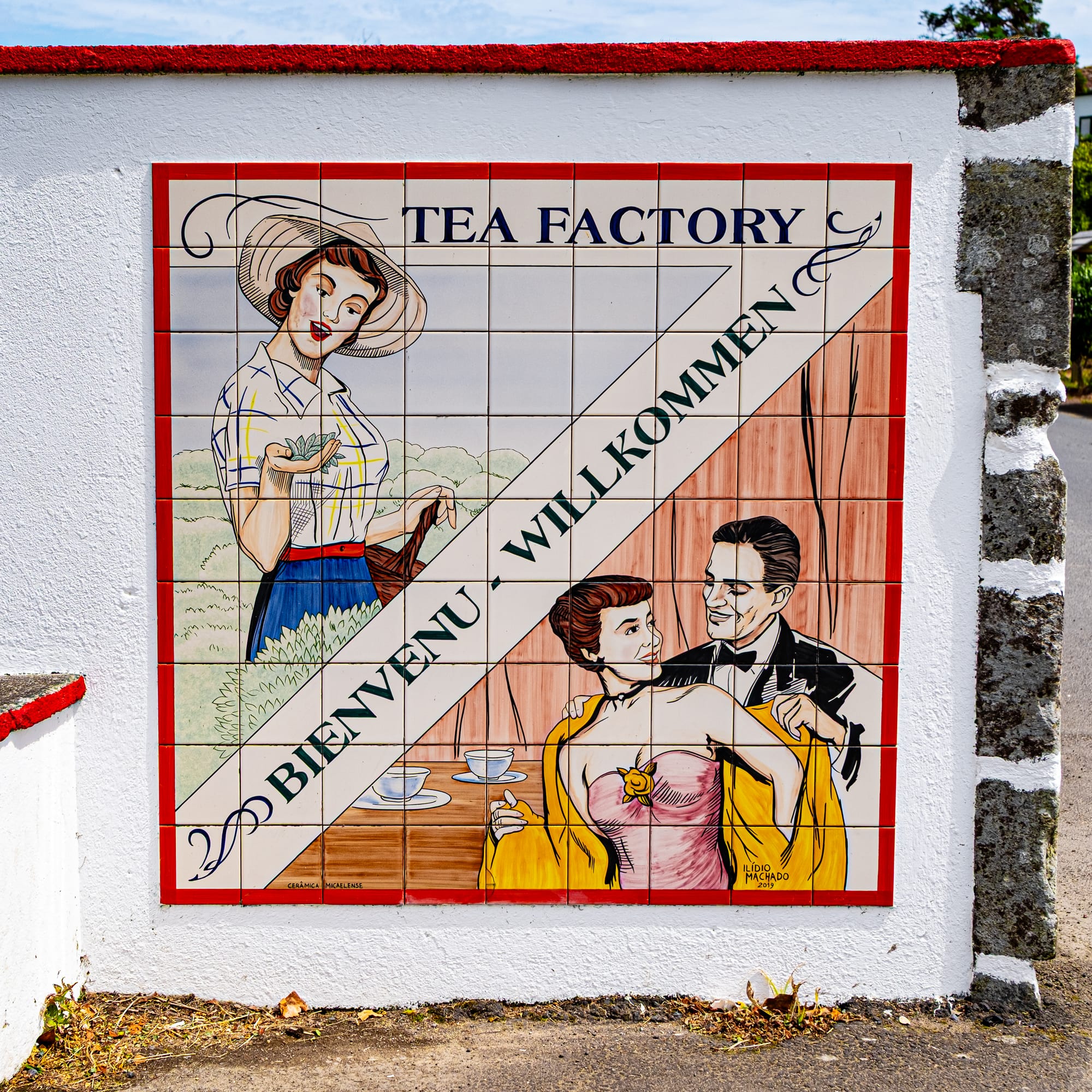
Old-timey tilework greets visitors to the tea plantation
The tea rows of Chá Gorreana stretch toward the Atlantic in soft, undulating layers.
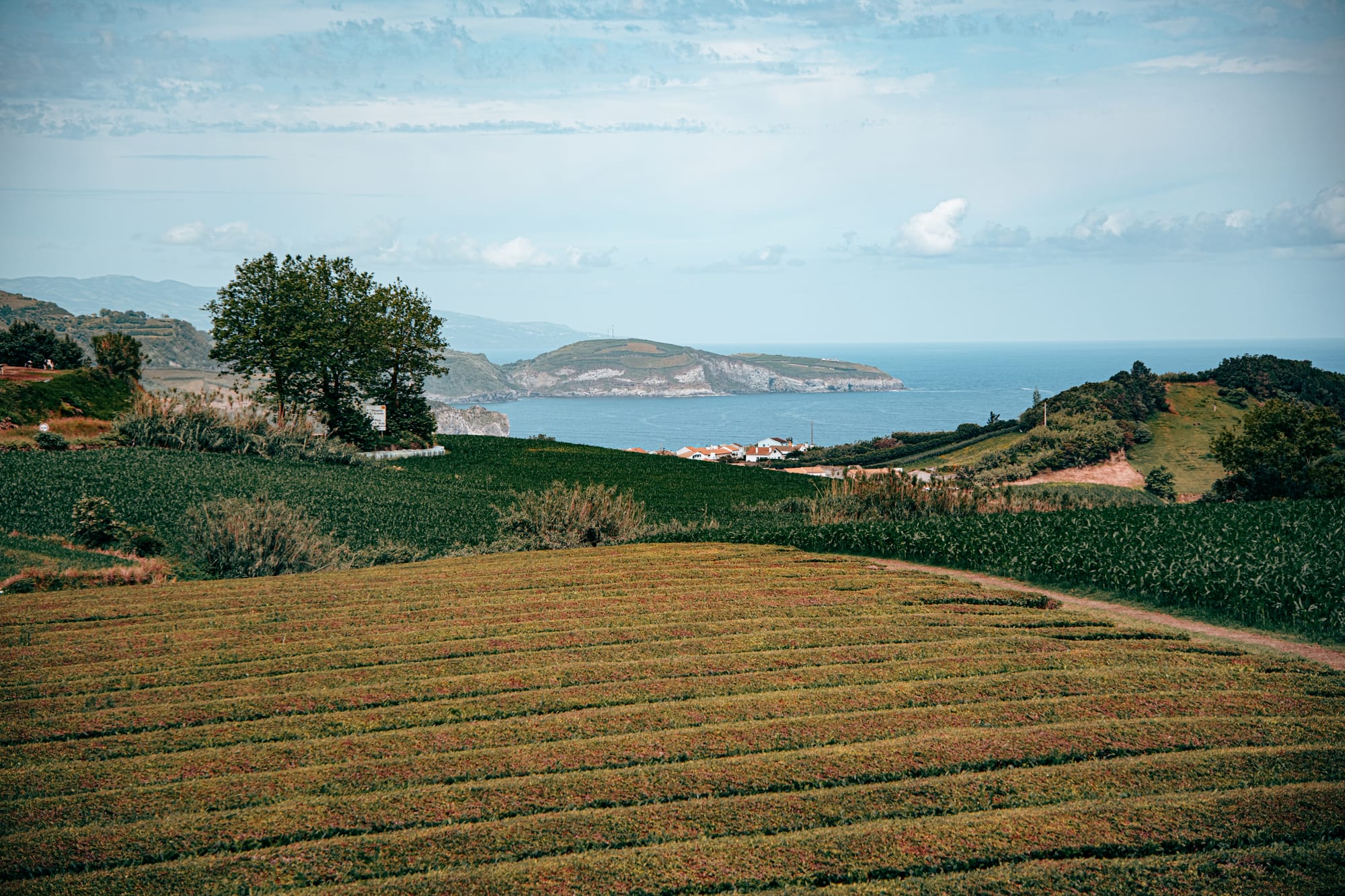
But beyond the fields sits the factory, where you can get an inside glimpse into the tea production process.
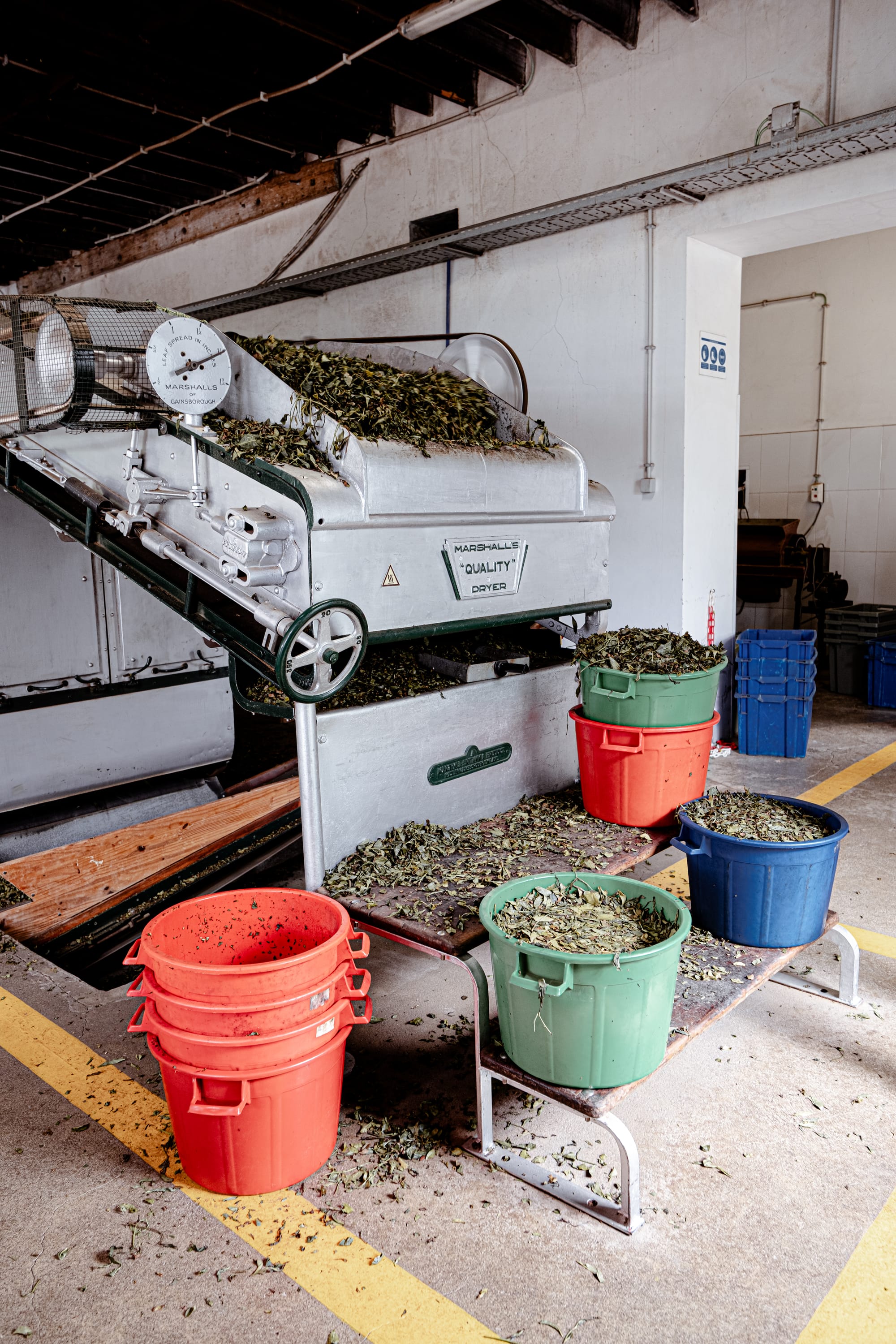
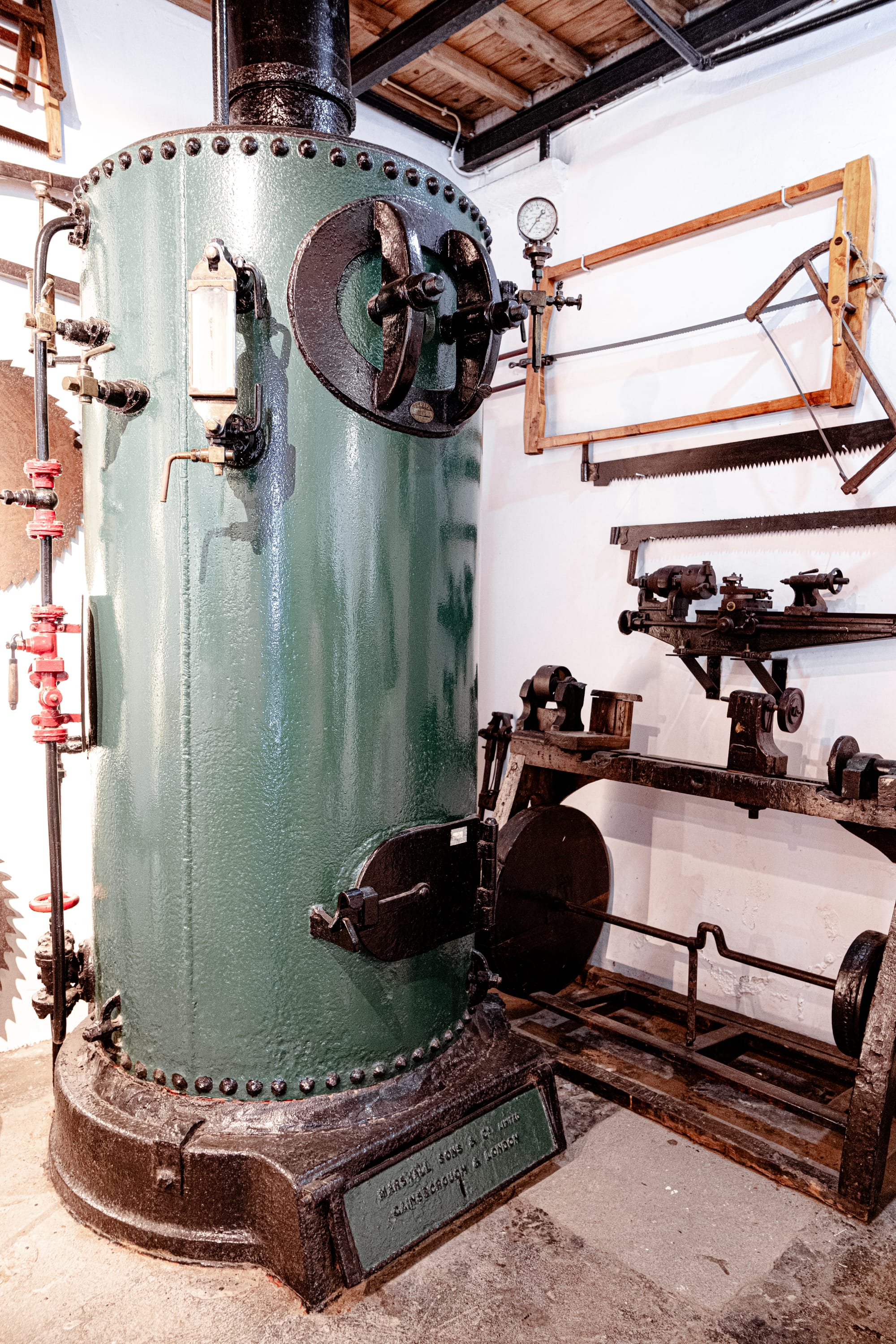
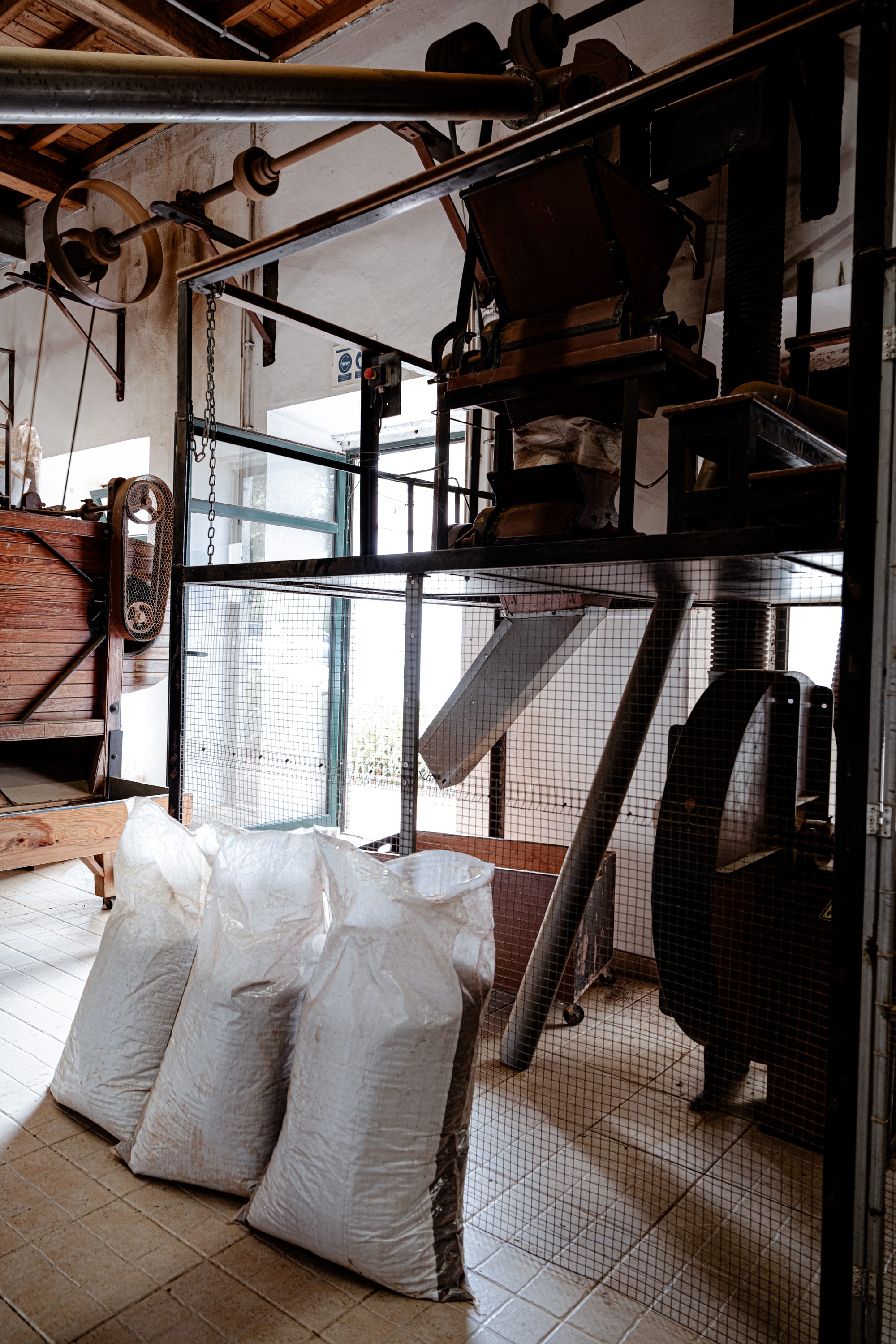
A walk inside the factory showcases the tea production process
You can even grab a free cup of tea at the end.
A living tea field
Europe is not known for tea. But here, it grows. Since 1883, Chá Gorreana has cultivated and produced green and black teas using traditional methods brought from Macau and mainland China via 19th-century Portuguese expeditions. The volcanic soil and humid microclimate of São Miguel proved surprisingly ideal. Today, Chá Gorreana remains the oldest, continuously operating tea plantation in Europe.
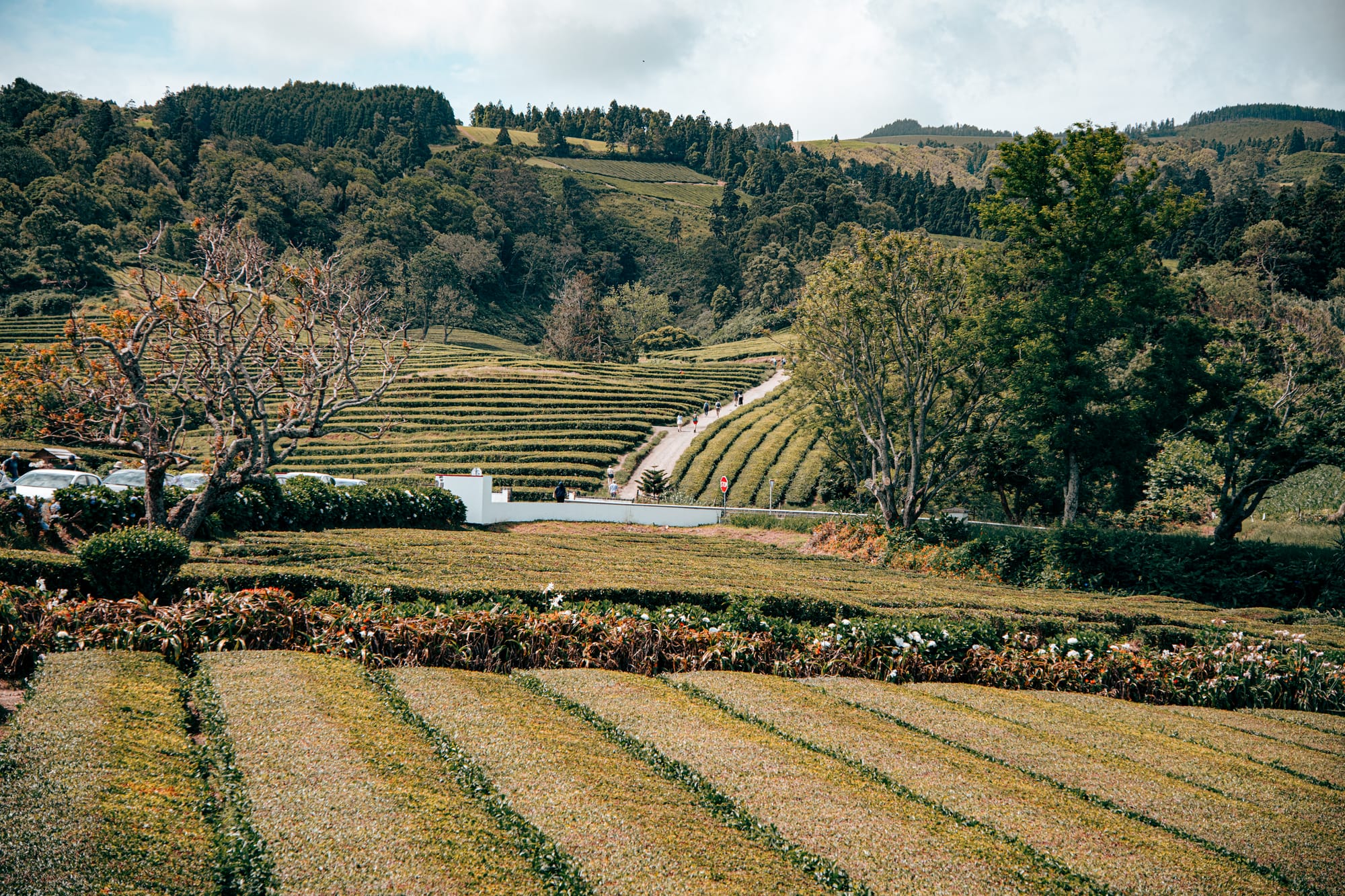
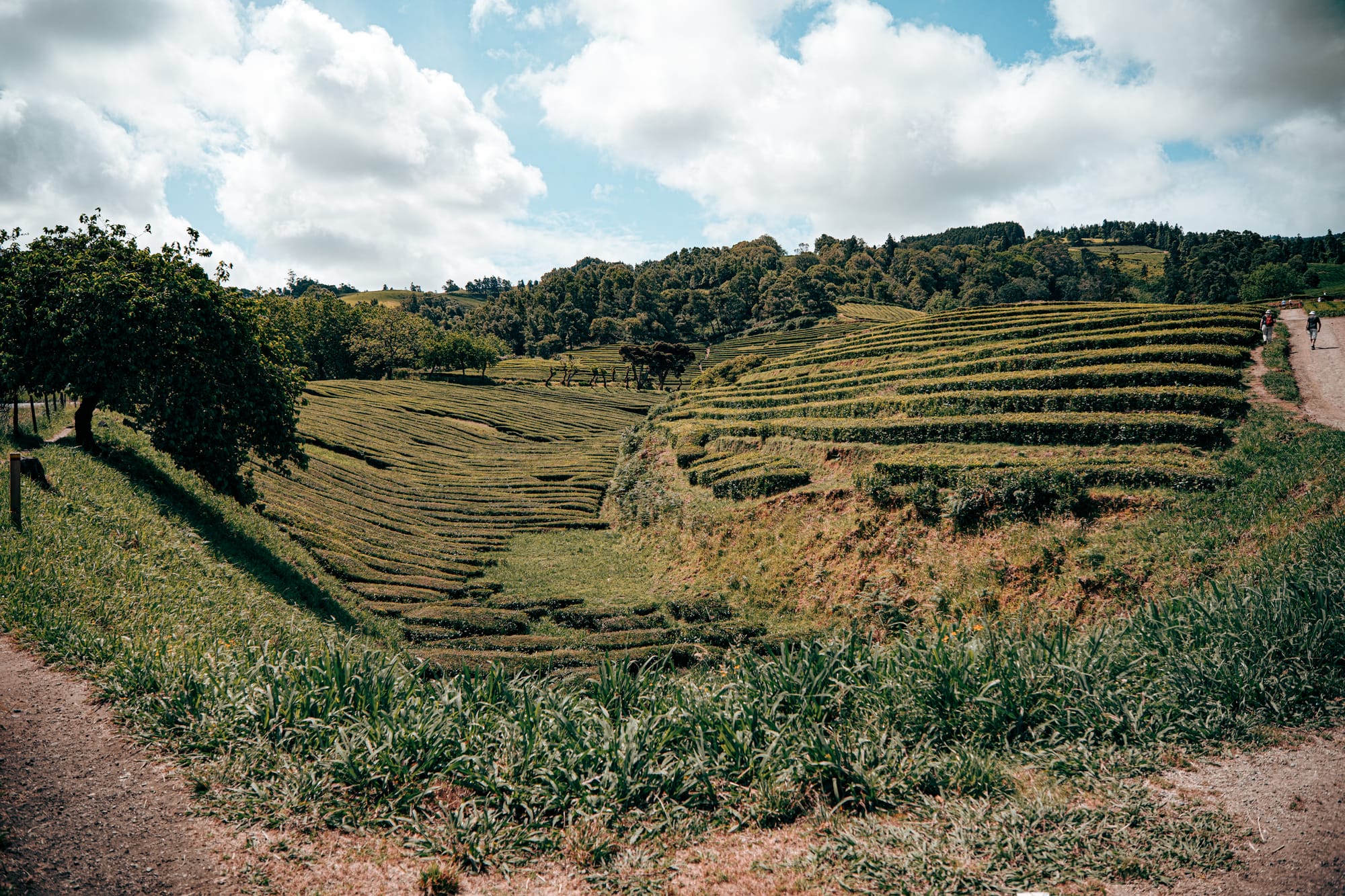
Paths through Chá Gorreana's fields invite quiet walking and careful noticing
There is no entrance fee, no map, no formal pathway. You simply begin walking. The rows are low and soft-edged, making them easy to wander through. Many visitors stop at the edge to take photos. Fewer follow the ridgelines deeper. But those who do will find a hush there. A sort of botanical exhale.
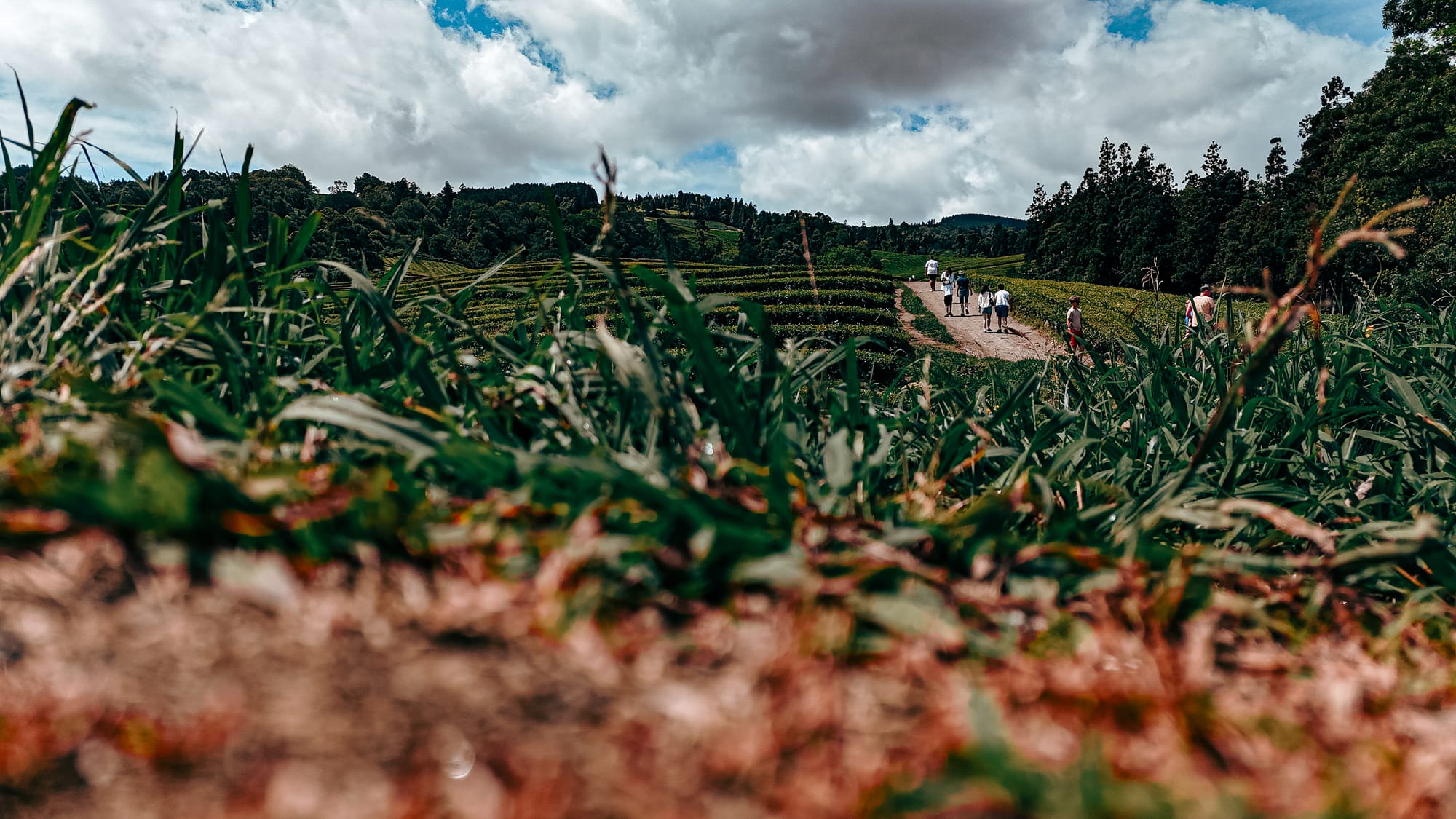
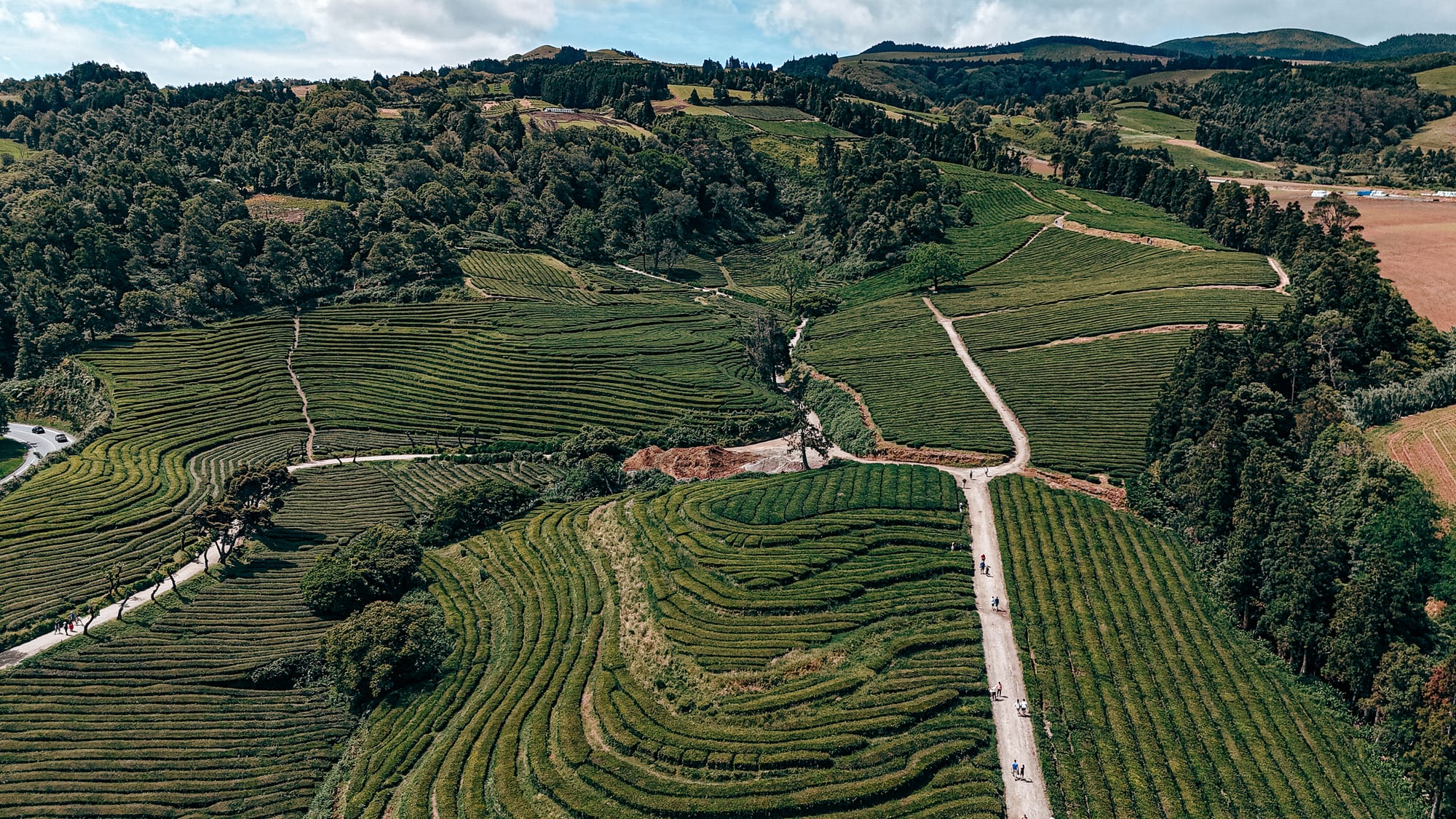
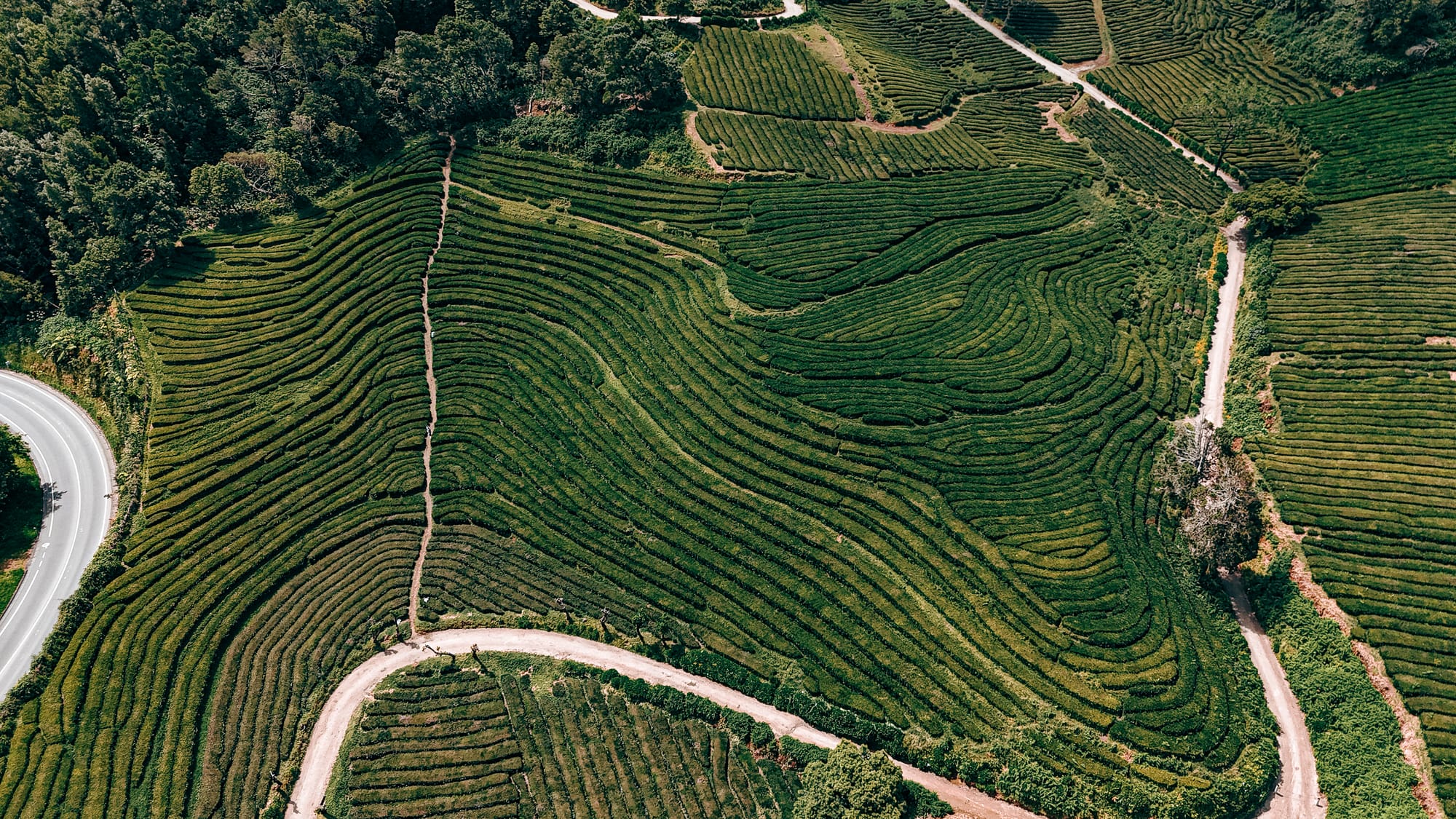
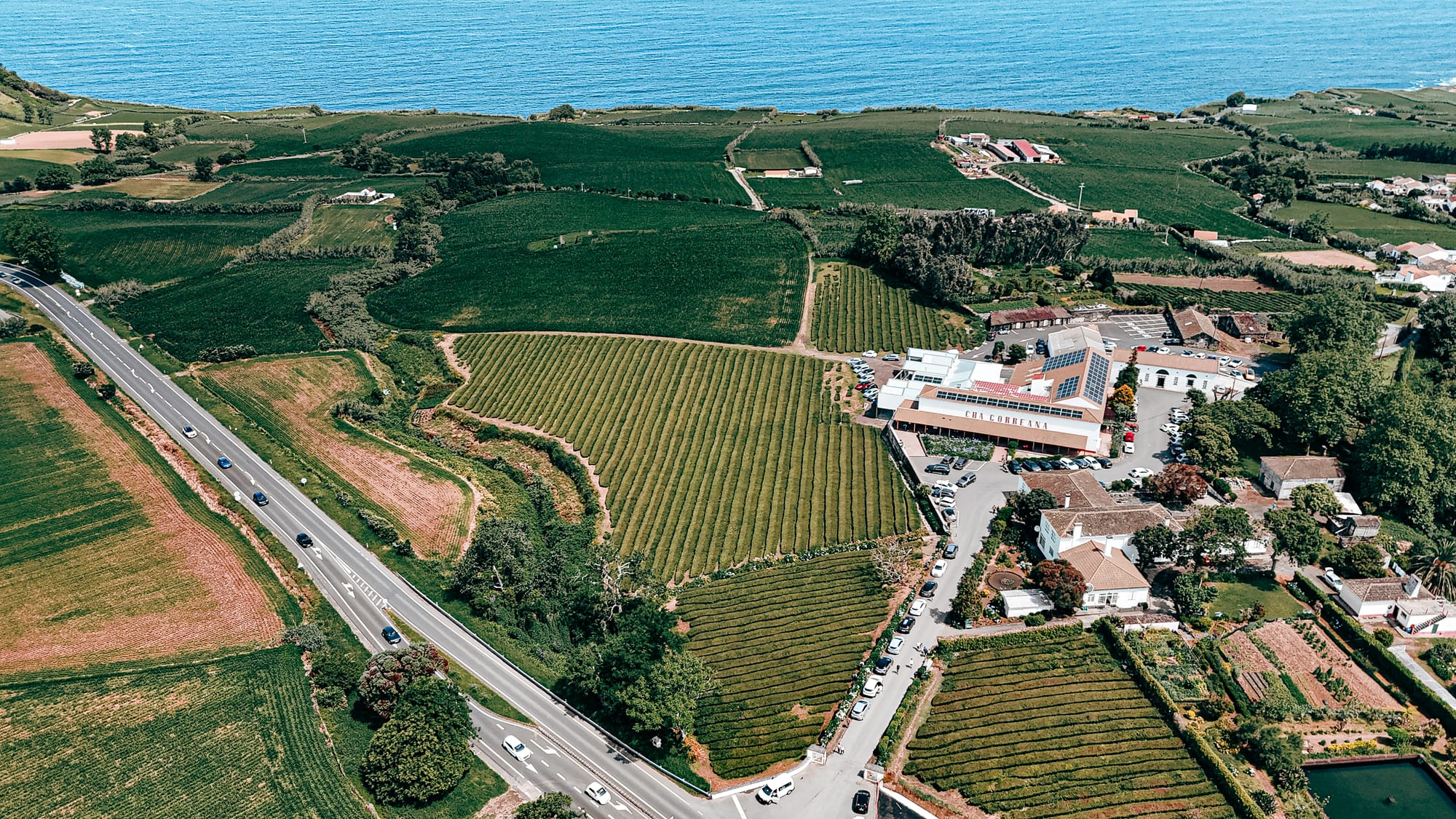
The view from above reveals emerald ridges
The plantation grounds provide a perfect and leisurely break from the island's more rigorous hikes.
The factory: a quietly humming machine
The walk ends, or begins, at the factory—a cluster of buildings that could be mistaken for a warehouse were it not for the steady warmth of steam and the scent of something both vegetal and roasted.
Inside, the machinery is still in use. Many of the machines date back to the early 20th century and are British-built. They clang, belt, sort, dry. This is not a staged production. It’s real work. You can watch the processing of leaves from behind a low railing: withering, rolling, oxidation, drying. The air here smells like toast and forest floor.
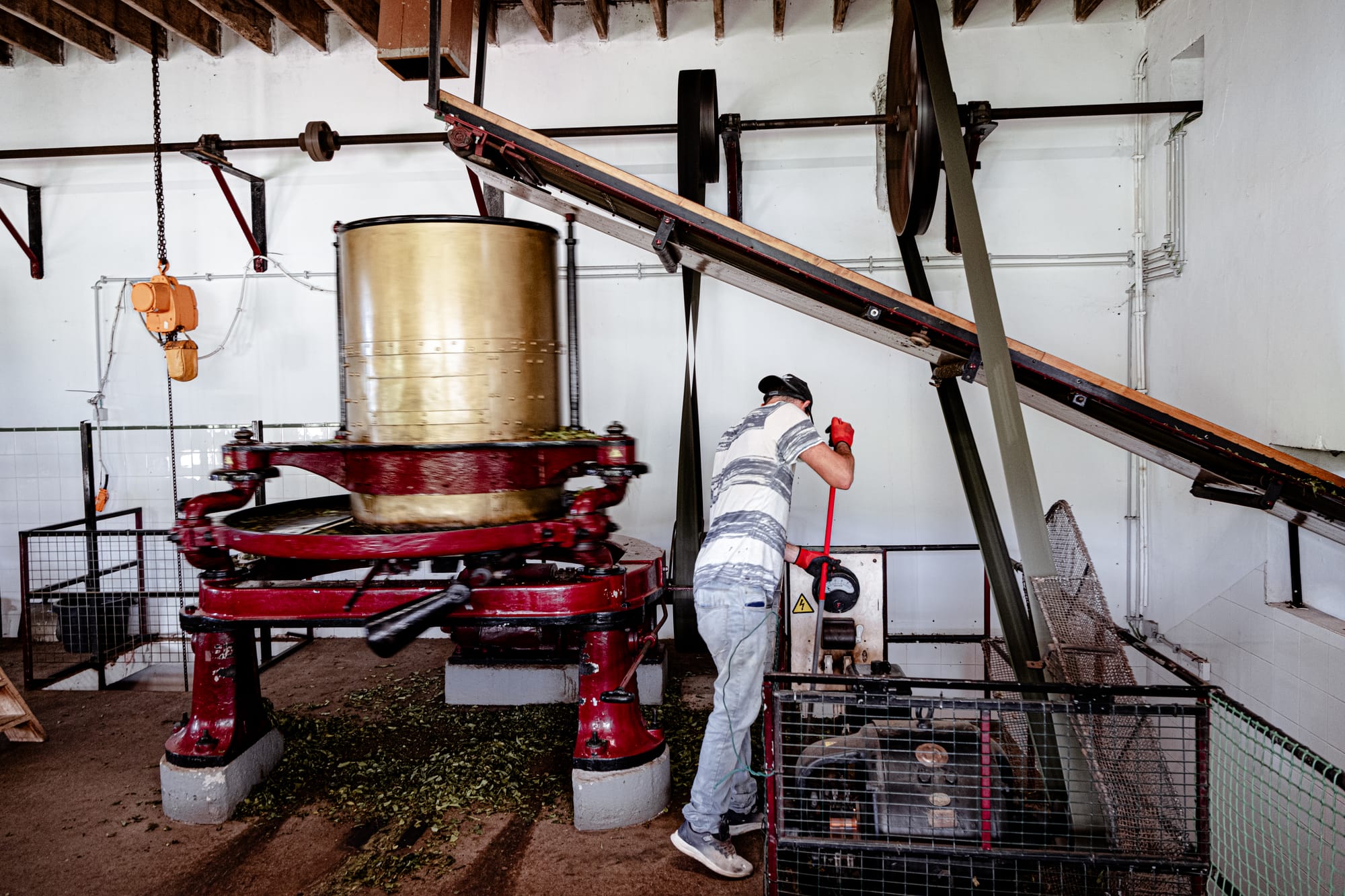
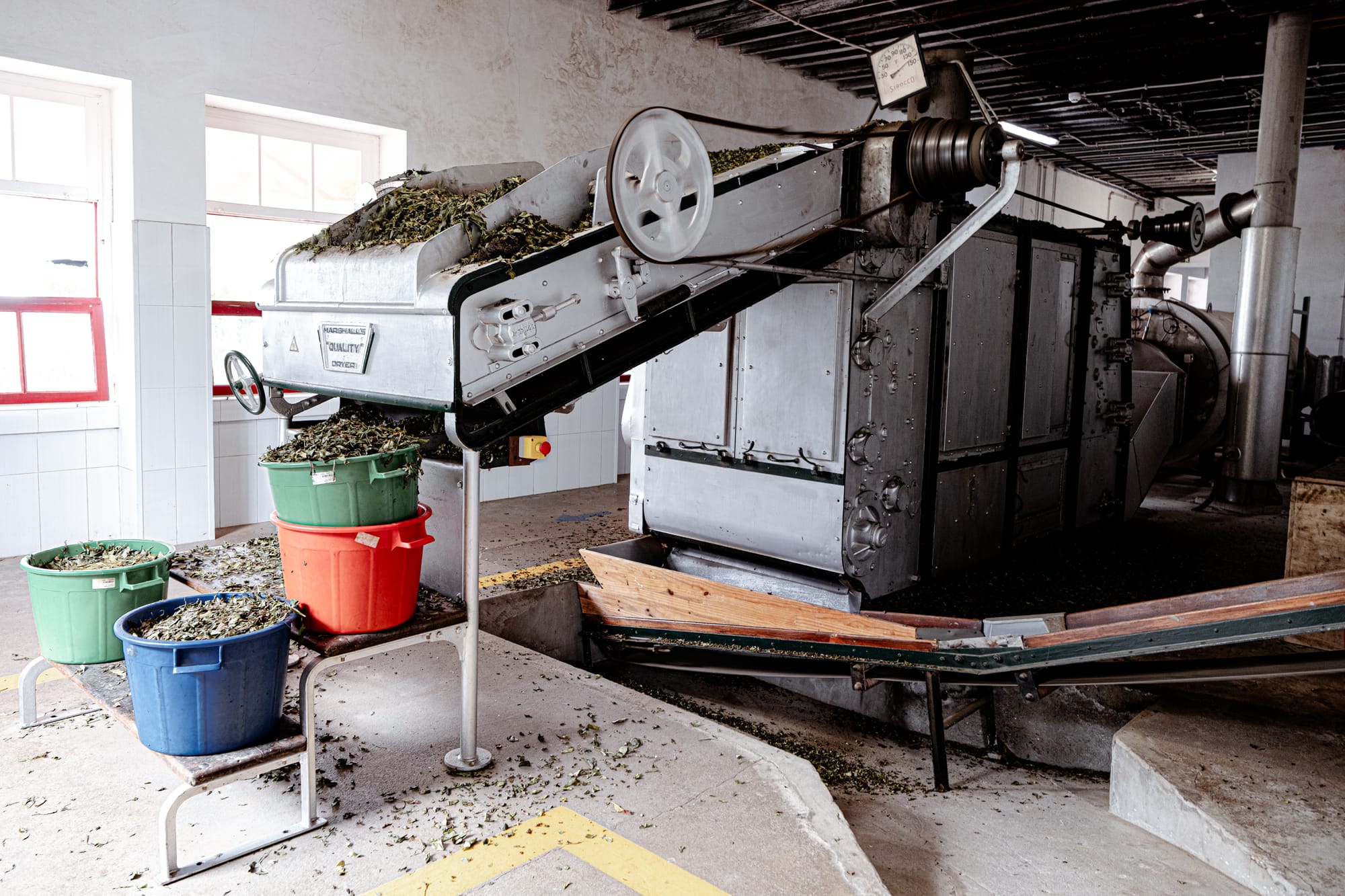
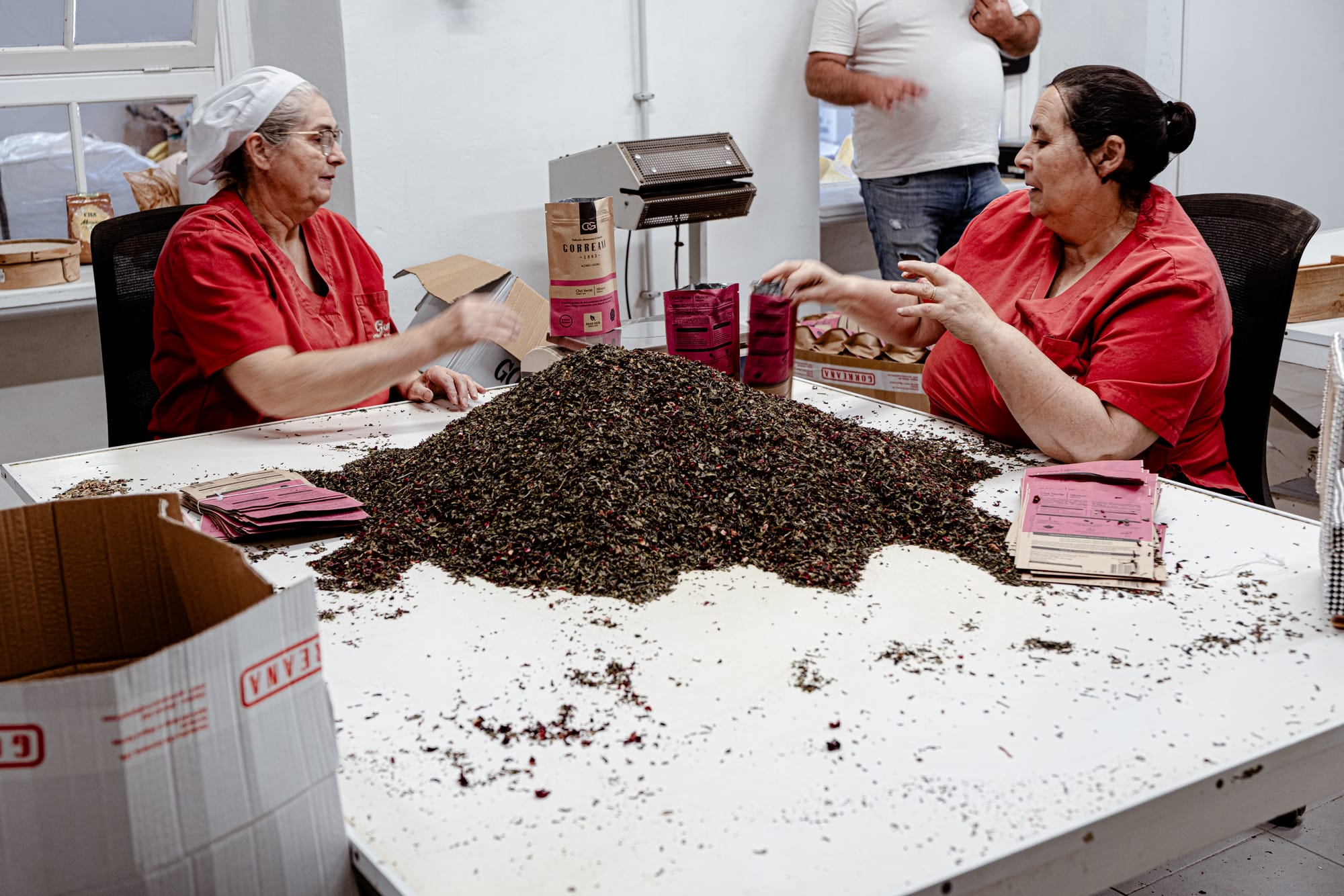
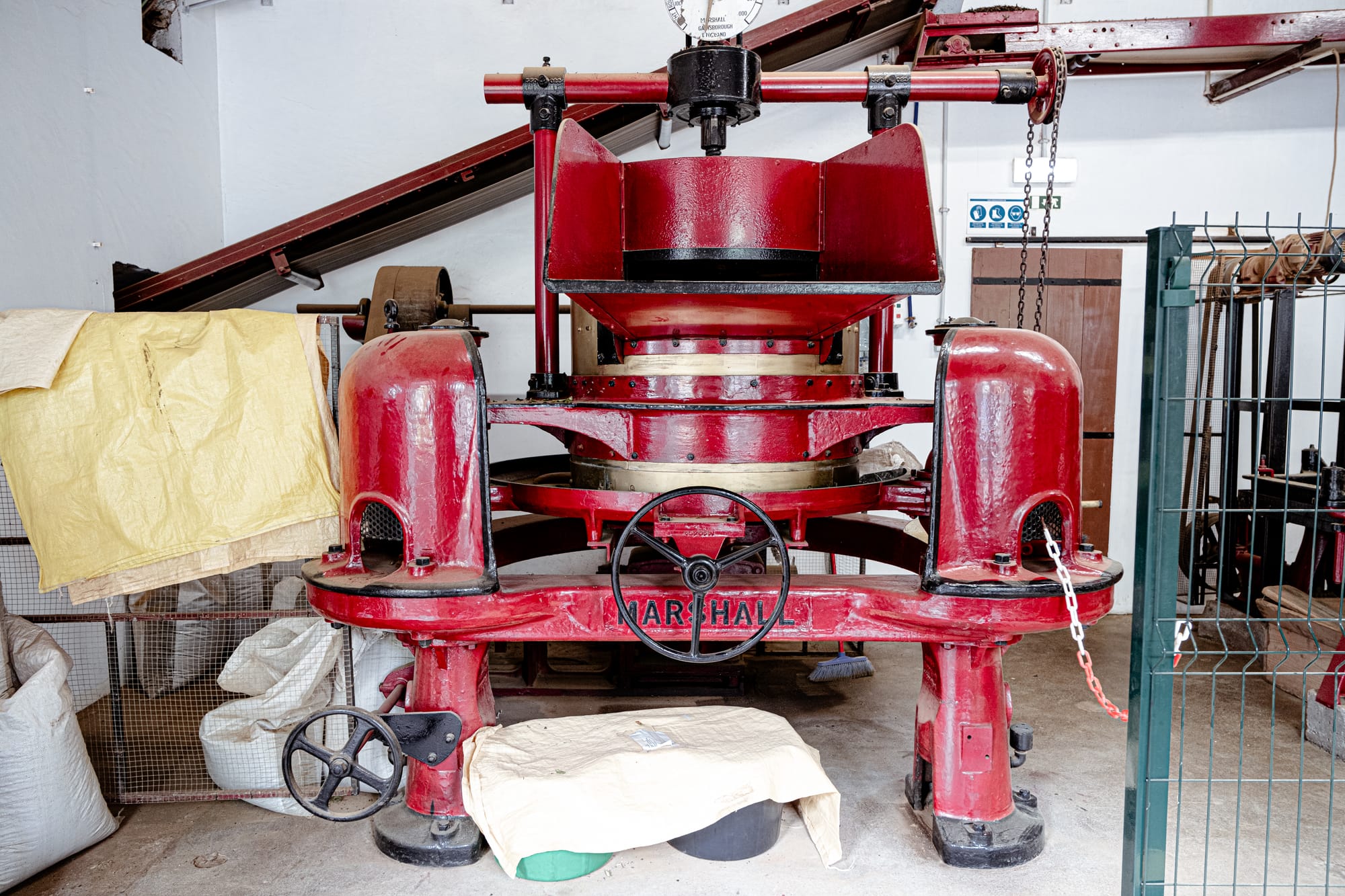
Inside the factory, production continues alongside visitors and aging machines
At the back, a small tasting counter awaits. The tea is poured from battered thermoses into paper cups—free, simple, abundant. Green and black. Slightly grassy, slightly sweet. Not complex in the way a ceremonial matcha might be, but satisfying in a way that reflects its place: clean, steady, and generous.
Tasting tea on the edge of Europe
Tea here is not fetishized. It’s part of a working ecology.
In Europe, tea is almost always an import. To drink it at the site of its growth is rare. At Chá Gorreana, the teas—green, black, and oolong—are grown, picked, processed, and packaged on-site. The process is visible, traceable, and spatially coherent. That in itself is unusual.
More rare still is the freedom to witness it without a gate.
There is a shop where teas are sold. The packaging is old-school, understated. You can also purchase soaps and liqueurs made with tea extract, but the real takeaway is the tea itself.
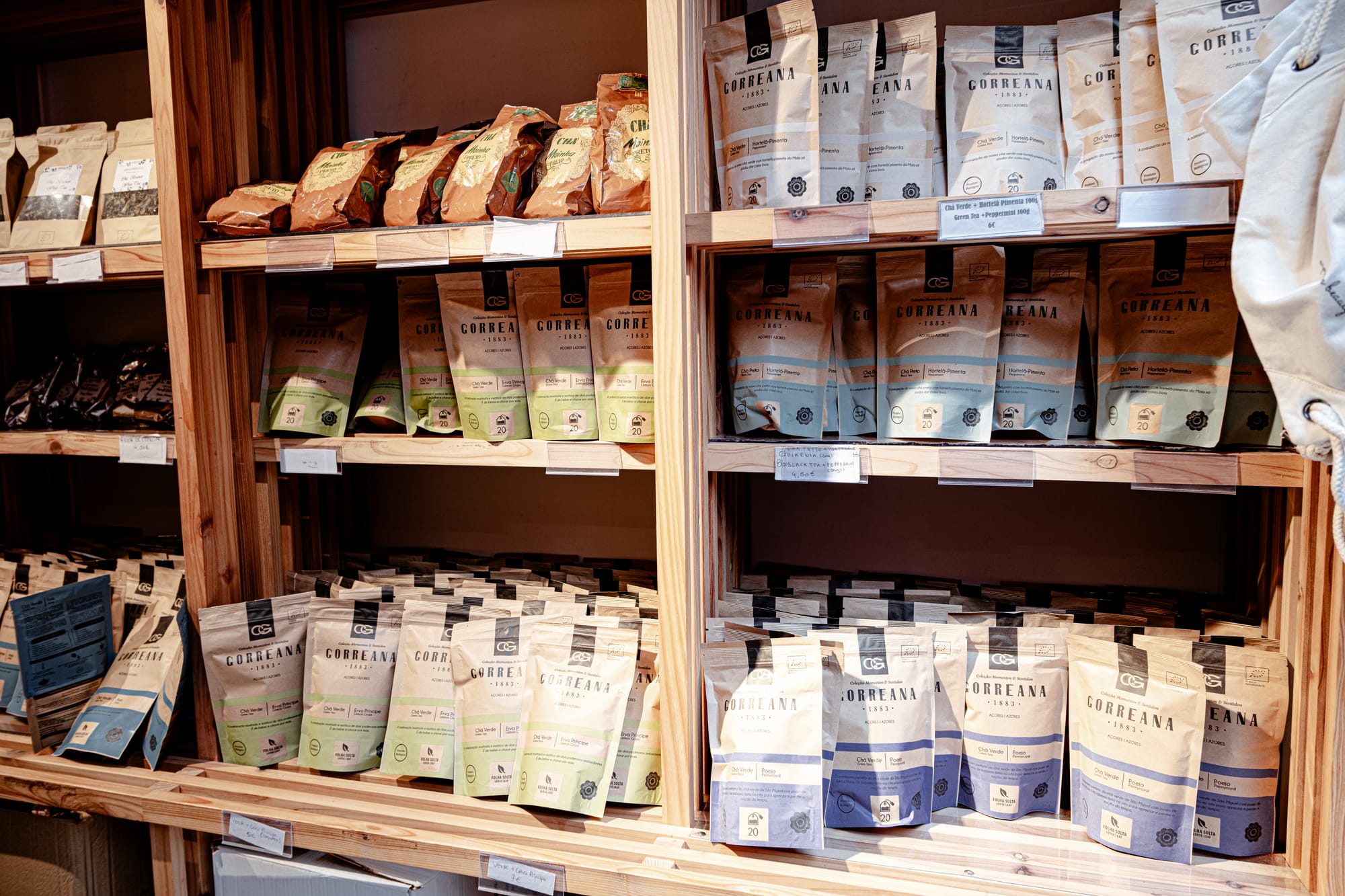
A unique find in the shop is essential oils from plants unique to the Azores. Be sure to have a smell of them.
A short history of European tea, grown here
Tea arrived in Europe through colonization and trade, most notably with the Portuguese and British empires. But its cultivation on European soil is far rarer. São Miguel's tea history began in the early 19th century, when the collapse of orange exports prompted economic experimentation. Tea plants, introduced by Chinese specialists invited by the Portuguese government, thrived in the island's acidic, volcanic soil and coastal humidity.
Chá Gorreana, established in 1883 by the Ménéres family, has been family-run ever since. It survived both world wars, multiple waves of migration, and the industrial modernization of agriculture. Its continued existence is not a nostalgia act. It’s an active operation, exporting across Europe while maintaining a distinctly non-commercial presence for visitors.
What kind of presence do we bring?
The experience at Chá Gorreana invites not just admiration but reflection. What does it mean to walk freely through a plantation? Who has access to such spaces, and who labors in them? The Azores are not just postcard-perfect islands; they are sites of layered colonial histories, ecological sensitivities, and economic shifts.
To walk these fields is to be in relation: to land, to plant, to worker, to climate. Presence here can be extractive or reciprocal. The difference lies in pace, attention, and how one chooses to move.
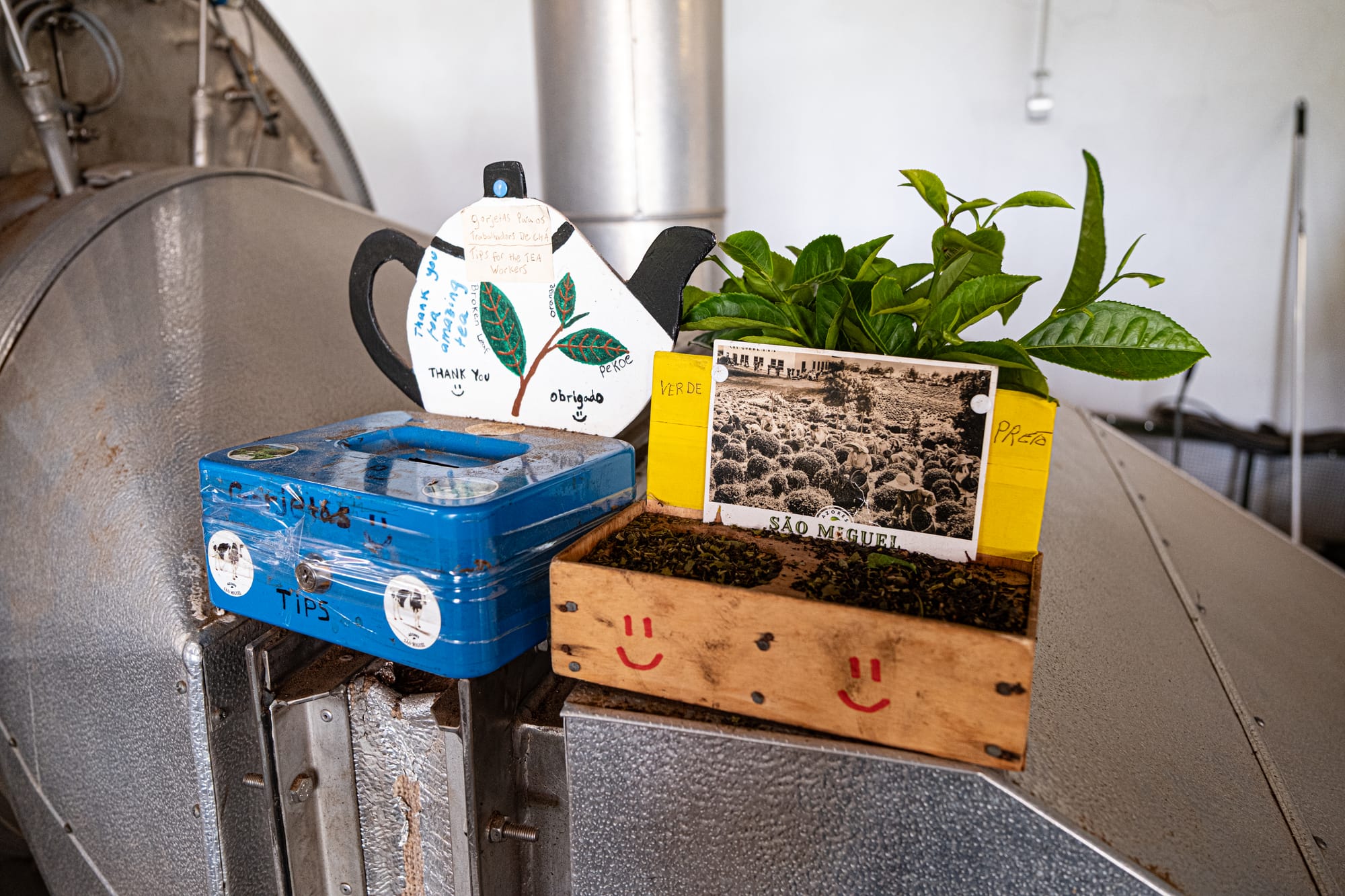
The subtle labor that makes our wandering possible—the pruning, the sorting, the quiet hands behind each trimmed line—is worth remembering.
You may come for the tea. You may stay for the view. But you leave with something quieter: a memory of what it feels like to stand still in a working landscape.
Chá Gorreana is a place to pause, to witness, to taste what grows when pace and care align.
Plan your visit
Several guided tours include a visit to Chá Gorreana—often paired with hot springs or volcanic crater lakes. These can be a great way to access the plantation without needing a rental car, and to connect your visit with wider ecological narratives on the island.
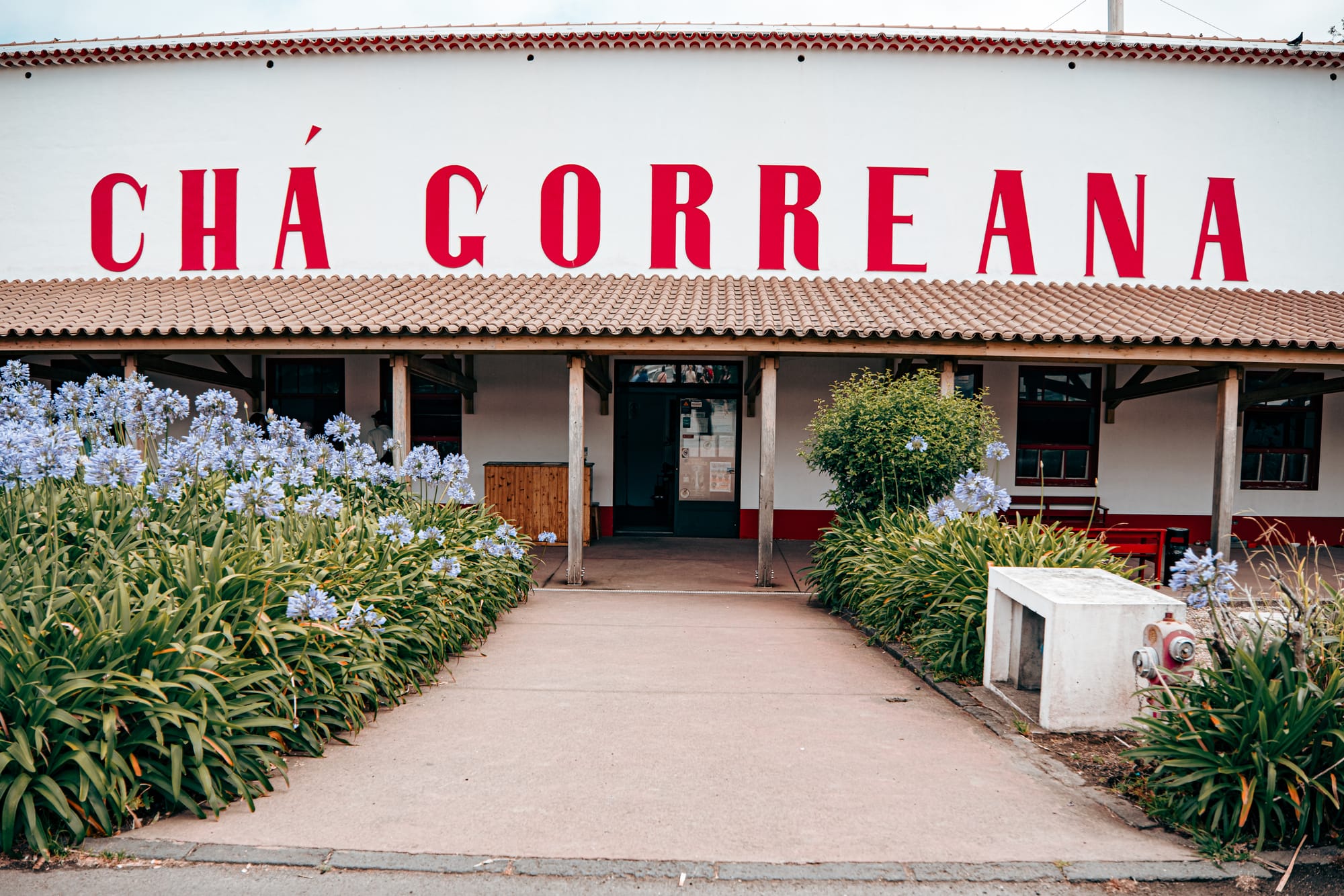
A nice complement to Chá Gorreana is Porto Formoso Tea Factory. A less popular option, it seems to be well-admired for its authenticity.






